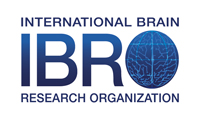
Ingestion of Bis(2-ethylhexyl) phthalate (DEHP) during adolescence causes depressive-like behaviors through hypoactive glutamatergic signaling in the medial prefrontal cortex.
Sign Up to like & getrecommendations! Published in 2021 at "Environmental pollution"
DOI: 10.1016/j.envpol.2021.117978
Abstract: Over the past decades, the production and use of hazardous chemicals has increased worldwide, and the incidence of neurological diseases is increasing proportionately. Among these chemicals, Bis(2-ethylhexyl) phthalate (DEHP) is the most common member of… read more here.
Keywords: dehp; like behaviors; depressive like; ingestion ... See more keywords

Mitochondrial ROS overproduction impairs glutamatergic signaling in frontotemporal dementia
Sign Up to like & getrecommendations! Published in 2018 at "Free Radical Biology and Medicine"
DOI: 10.1016/j.freeradbiomed.2018.04.207
Abstract: Glutamatergic neurotransmission is essential for learning and memory but an overactivation of the pathway may lead to calcium overload, excitotoxicity and neuronal death. Together with this, oxidative stress and mitochondrial dysfunction are all relevant to… read more here.
Keywords: mitochondrial ros; frontotemporal dementia; ros; ros overproduction ... See more keywords

Alterations in glutamatergic signaling contribute to the decline of circadian photoentrainment in aged mice
Sign Up to like & getrecommendations! Published in 2018 at "Neurobiology of Aging"
DOI: 10.1016/j.neurobiolaging.2018.02.013
Abstract: Robust physiological circadian rhythms form an integral part of well-being. The aging process has been found to negatively impact systems that drive circadian physiology, typically manifesting as symptoms associated with abnormal/disrupted sleeping patterns. Here, we… read more here.
Keywords: decline circadian; decline; alterations glutamatergic; signaling contribute ... See more keywords

Guanosine Prevents against Glutamatergic Excitotoxicity in C. elegans
Sign Up to like & getrecommendations! Published in 2019 at "Neuroscience"
DOI: 10.1016/j.neuroscience.2019.07.016
Abstract: Glutamatergic neurotransmission is present in most mammalian excitatory synapses and plays a key role in central nervous system homeostasis. When over-activated, it can induce excitotoxicity, which is present in several neuropathologies. The nucleoside guanosine (GUO),… read more here.
Keywords: glt; excitotoxicity; glutamatergic excitotoxicity; glt glt ... See more keywords

Vglut2-based glutamatergic signaling in central noradrenergic neurons is dispensable for adult breathing
Sign Up to like & getrecommendations! Published in 2023 at "Physiology"
DOI: 10.1152/physiol.2023.38.s1.5732285
Abstract: Central noradrenergic (NA) neurons are key constituents of the respiratory homeostatic network. NA dysfunction is implicated in several developmental respiratory disorders such as Sudden Infant Death Syndrome (SIDS) and Rett Syndrome. Previous studies suggest that… read more here.
Keywords: noradrenergic neurons; glutamatergic signaling; physiology; vglut2 based ... See more keywords